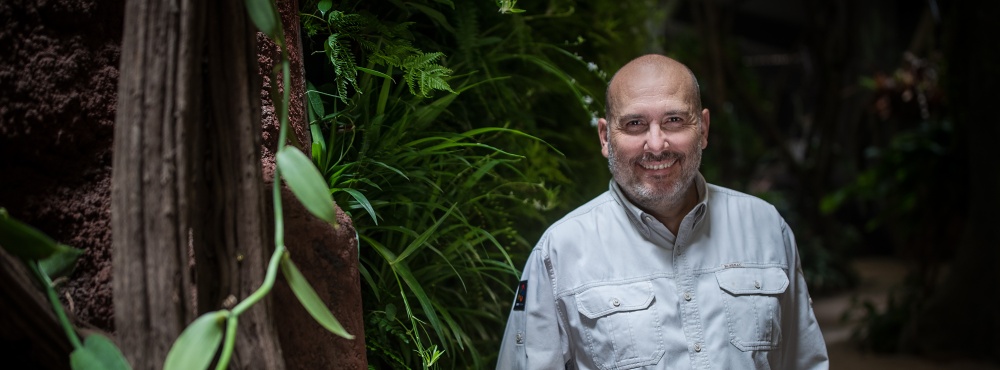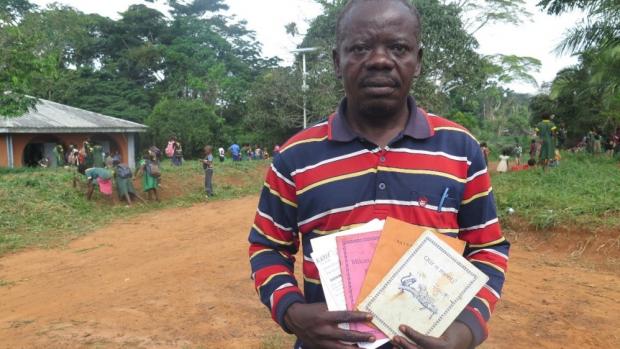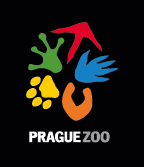Gorilla Fairy Tales in the Badwe’e dialect

There are about seven thousand languages in the world. However, some estimates suggest that 50–90 % of them could be extinct by the end of the century. So, it is fair make a comparison between endangered languages and endangered species. Moreover, one of the potentially endangered languages is in direct contact with endangered species in a project initiated some time ago in Cameroon by Jocelyn Ewane Aubery, the coordinator of our Wandering Bus project.
 Priest and ethnolinguist Maurice Ekoalea Mvolo. Photo: Jocelyn Ewane Aubery
Priest and ethnolinguist Maurice Ekoalea Mvolo. Photo: Jocelyn Ewane Aubery
Every day Jocelyn works with the children, teachers and parents from the villages around the Dja Biosphere Reserve. He talks to them about conservation and uses our gorilla storybook to do so. This was originally written by Tereza Šefrnova and I for Czech children, however, it has been adapted and translated into French to give a version that has easily proved its worth over the years in Central Africa. The little gorilla Moja, who is the main heroine of our tales, is popular with children in Cameroon, the Central African Republic, Gabon, the Republic of Congo as well as other countries. So, Jocelyn came up with the idea that this book should be translated into the Badwe’e dialect of the Koonzime language, spoken by a large part of the rural population around the Dja reserve. What a great idea! It both helps us to reach our target group in their native language and helps preserve a language!
There are two official languages in Cameroon, French and English. Formally, it is a bilingual country, but in fact it is divided into a smaller Anglophone and a larger Francophone part. Cameroon is thought to have more than 260 indigenous languages, and many of them are already endangered. As for the Badwe’e dialect of the Koonzime language, it is related to Swahili, for example, and probably about 20,000 people speak it. That's not many. What’s more, all the books translated into Badwe’e could easily fit into a single briefcase. These include biblical texts or collections of stories and proverbs. Hopefully, they will soon be joined by the title Mɨtɔ́lʉ́ mɨ́ Óntile – which is nothing other than Gorilla Fairy Tales. Jocelyn gave a stimulus for them to be translated into Badwe’e by the priest and ethnolinguist Maurice Ekoalea Mvolo. Now all that remains is to finish typesetting the book, print it and, most importantly, distribute it.
But I’ll tell you one thing, it is a strange feeling to see the stories about Moja translated into such a distant language. To illustrate, here’s the opening sentence of one of the chapters, “É lʉ́ʉ́ dóbo é mɛ́n, mbɛ̌r óntile vé á beó sí lɨhba élœ é kwan. Áyo á be ó lésâ bɨ́syɛ́ bɨ́ kísin. Dâ nyɛ lé ebâʼle lʉ́ ʉ́ ékǎn zɔʼ nye lé etô le edwɛ̂ʼ bɨgúmo bɨgúmo é tʉ́ ʉ́ ŋ.”
ZOOPRAHA.CZ
Contacts
- The Prague zoological garden
U Trojskeho zamku 120/3
171 00 Praha 7
Phone.: (+420) 296 112 230 (public relations department)
e-mail: zoopraha@zoopraha.cz
Others








